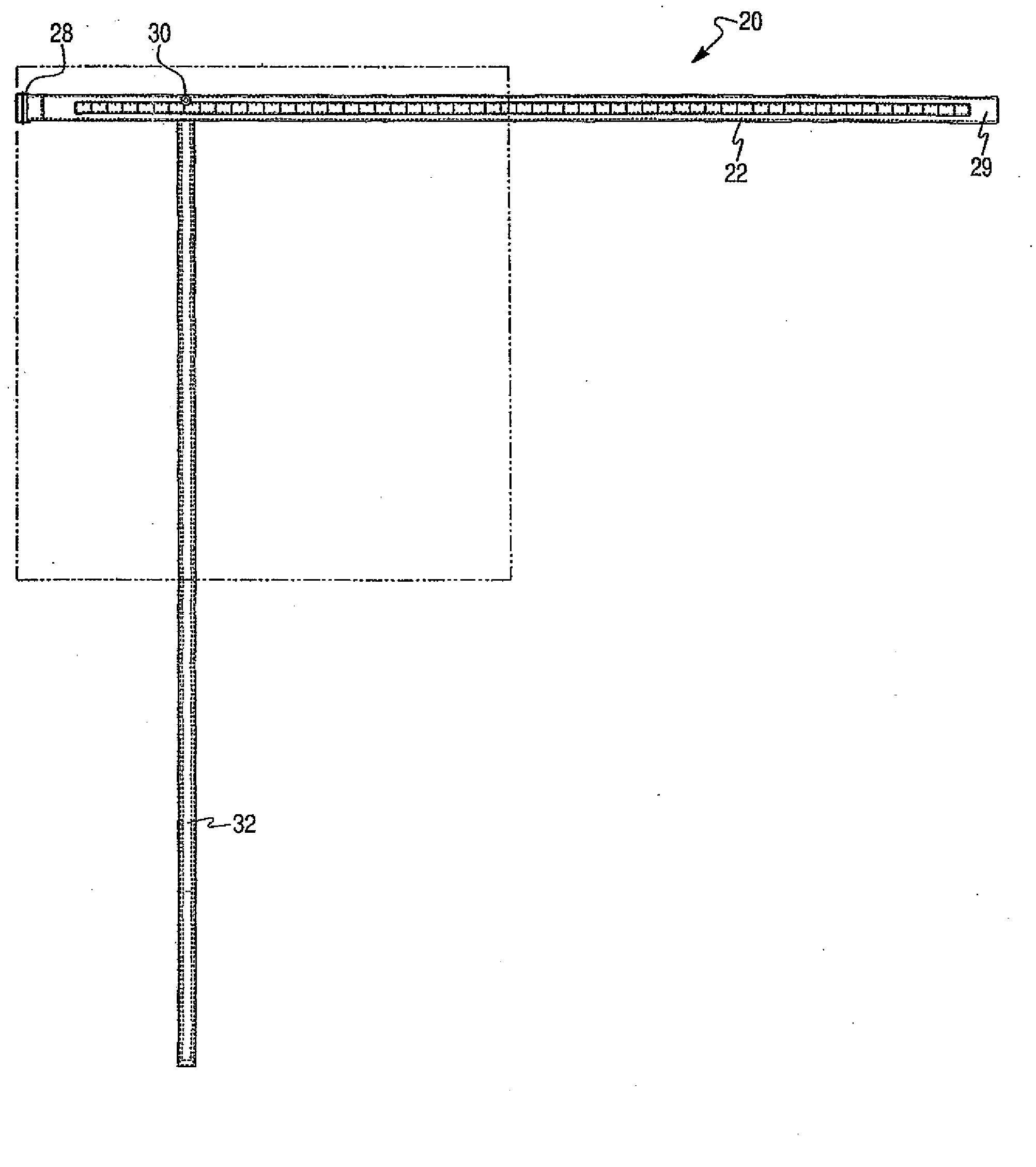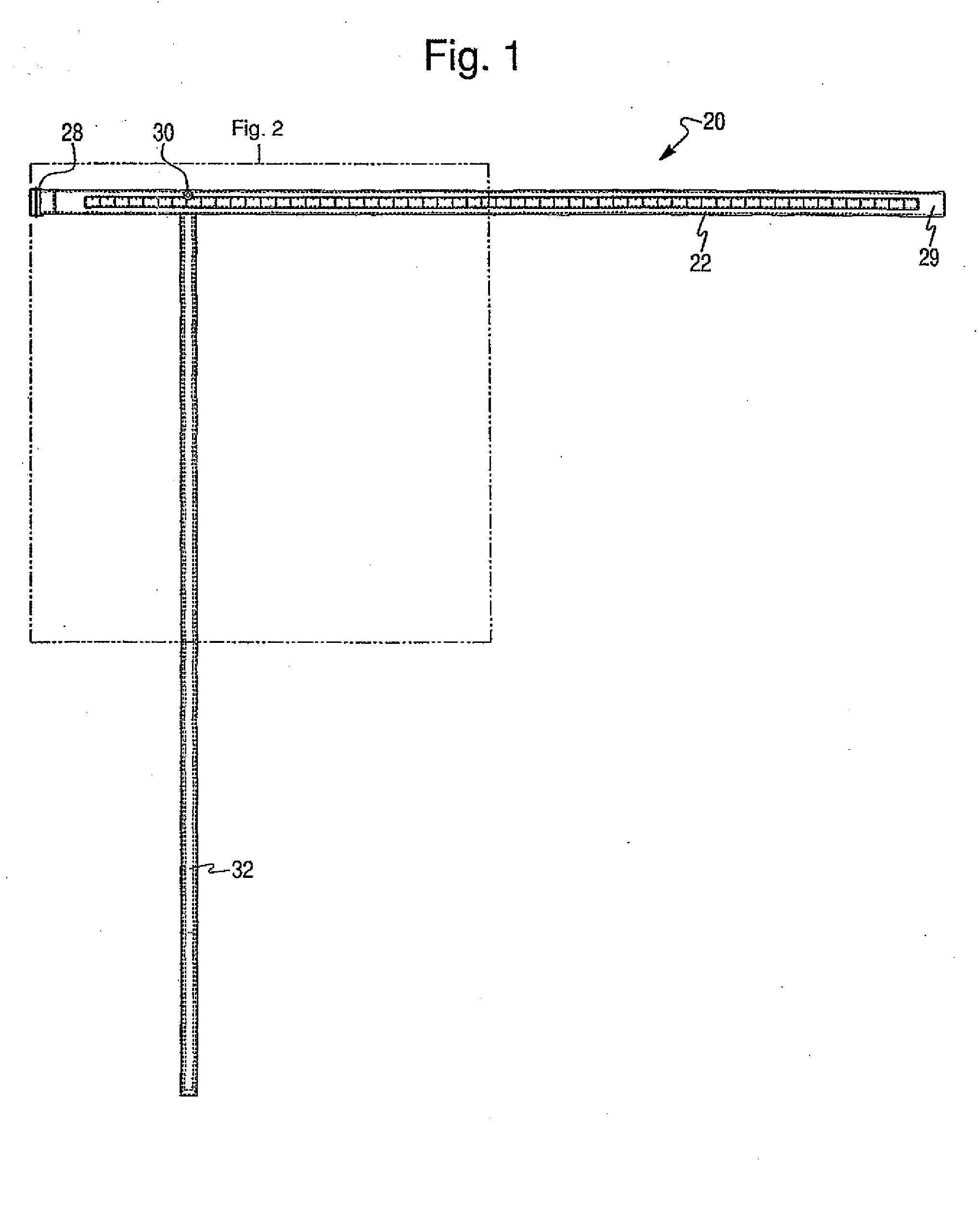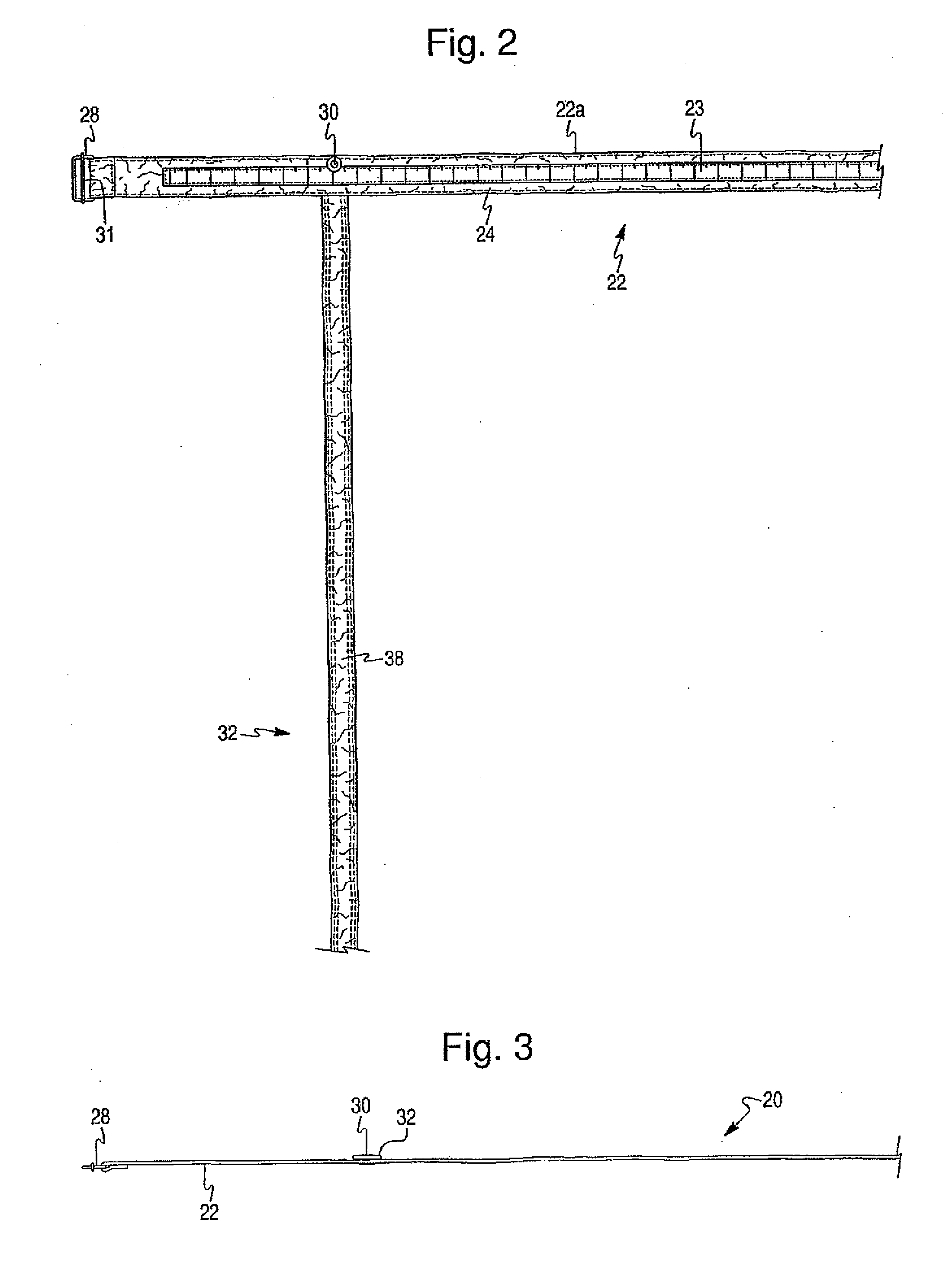Difficulties often arise in tracking the progress that an individual achieves through exercise and diet.
Another problem associated with using
weight loss as the primary benchmark for setting exercise and diet routine goals is that the individual, while having an ideal
body shape and appearance pictured in their head, will not always be able to predict accurately what
target weight loss is required to attain their ideal body shape and appearance.
The individual may reach a
target weight loss through their exercise and diet routine only to find, for example, that their
target weight was not realistically low enough to allow them to fit into a particular size dress.
The use of body measurements for evaluating a program's effectiveness is not without its problems.
Because body parts possess curvatures and taper, if a
measurement device is placed on an individual's body part, such as a
thigh, at a location higher or lower than the placement for a previous periodic measurement of the same body part, the difference in recorded measurements may not reflect an accurate and precise comparison for reliably evaluating progress over the
dieting and exercise period.
Still another problem of tracking progress by body measurement is that individuals usually fixate on a single body part and focus their attention only on that body part.
Hence, an individual may become frustrated because, for example, diminutive
waistline losses might not fully reflect greater overall
weight loss more pronounced in other body areas, such as the thighs.
Additionally, individuals are often not able to predict quantitatively what body part measurements are required in order to reach their desired body appearance and shape.
Consequently, the individual may set a target goal body part measurement that is either insufficient or excessive for attaining an ideal body shape and image desired by the individual.
Although the process is
time consuming, it saves the
consumer the inconvenience of returning garments which, when tried on at home for the first time, do not properly fit.
Depending upon eccentricities in the body of the
consumer, however, for many consumers a garment may properly fit one body part while improperly fitting another body part.
However, discrepancies in shoulder broadness and girth, even between individuals sharing common neck sizes and sleeve lengths, can result in the shirt properly fitting one individual and improperly fitting another individual of different girth.
Proper fitting of currently available stock sized garments often presents additional problems.
Although most manufacturers adopt standard numbered sizes or more indefinite designations such as small, medium, large, etc., there can be wide discrepancies in the actual measurements of a garment produced by one manufacturer when compared to that of another due to lack of size uniformity throughout the industry.
As a result, consumers frequently find that although a certain size of garment produced by one manufacturer fits them, the same size garments made from another manufacturer does not fit.
It is not uncommon, therefore, for consumers to be somewhat perplexed or exasperated as they find that a garment from a particular manufacturer that bears “their” size does not fit actually them, only then to be told by a salesperson that despite the common size designations of the garments, the non-fitting garment is from a particular line of that manufacturer that runs bigger or smaller.
Further, the in-store
consumer is restricted to perusing and
purchasing from the limited stock of a retail store.
Sales are often thwarted because a garment desired by the consumer is not available in stock in the consumer's size.
One of the more rigorous and deleterious problems experienced by online sellers resides in the transaction costs of consumer returns.
Perhaps the most prominent reason for consumer returns stems from improper fit.
However, consumers often have misperceptions of their own body shape and dimensions when ordering cloths.
Further, as discussed above there are generally differences in garment cuts between brands, leading to a lack of a
consensus among manufacturers in
sizing garments.
Furthermore, consumers often experience weight changes and growth spurts, particularly in the case of younger consumers, that cause the consumer to change sizes between purchases.
Consequently, the consumer will not get a true indication of the fit of the garment until the purchased garment has been received and tried on, usually at home, by the consumer.
Returns and exchanges of online product sales cost the clothing industry millions of dollars annually.
Contributing to diminished profits of online sales are shipping costs, restocking expenses, damage to returned garments, and overall dissatisfaction cost that could
impact the continuing success of the brand in general.
Another problem arising from Internet ordering of standard stock-sized garments is that many Internet shoppers are only willing to consider
purchasing garments over
the Internet from manufacturers or manufacturers' product lines that they already own, neglecting to consider either other manufacturers or product lines.
The verbiage and charts frequently offered on web sites to help a consumer determine the appropriate size to purchase often have no positive effect.
Consumers lacking tailoring experience and tools usually do not bother to go through the steps of taking complete and accurate measurements before they make a purchase of clothing, or they are confused or daunted by the task of deciphering the directions to determine their size.
At a minimum, these problems associated with Internet clothing shopping can result in increased
frustration and wasted time and expense as a consumer has to send purchases back one or more times to the vendor in favor of a different size until this
trial and error process hopefully results in an appropriately fitting garment.
This process may lead a frustrated consumer, who might have been a loyal customer of a given brand, to either no longer shop for clothing via
the Internet or no longer continue
purchasing a particular manufacturer's garments.
Current fashion trends further exacerbate the problems associated with so-called stock-size garment purchases.
These fashion trends have made
sizing designations further unreliable.
These trends have rendered many traditional garment measurements, such as the inseam measurements, relatively useless because these measurements depend upon the height or location of the waistband on the wearer and the location of the rise.
The search for the right stock size can be exhausting and frustrating, and often in vain because an acceptable stock size fit simply might not exist for a certain
end user.
However, custom garments are typically much more expensive than standard or ready-to-wear garments and usually require an
extended time period for production of the garment.
The extra expense of custom garments stems in part from the fact that production of such garments requires the time and expertise of a skilled tailor, working with a
tape measure, to accurately measure the person for whom the garment is being customized.
In addition to the expense, a consumer who chooses the custom garment resigns himself to the fact that he or she can not accomplish the process himself from home via
the Internet and will need to make one or more trips to a tailor to complete the measuring process alone.
These so-called standard measurements, however, are rendered meaningless if the wearer intends to wear the clothing in a non-traditional manner, for example, if the wearer intends to locate the waistband of the finished garment at a point other than where the tailor has taken his traditional
waist measurement.
Such judgment errors, whether attributable to the consumer or tailor, cause the tailor to bear the additional time and expense of altering the garment or may even require the garment to be remade.
Alteration and start-over delays serve to increase expense and consumer
frustration.
A further problem associated with tailoring using a conventional measuring tape is that the tailoring process involves taking multiple measurements that are interrelated with one another.
 Login to View More
Login to View More  Login to View More
Login to View More 


